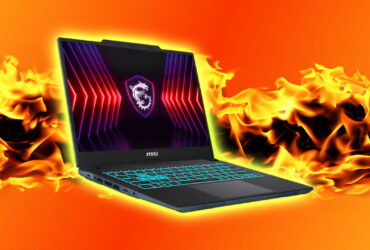The Intel Arc Battlemage launch is mere days away, as Intel’s new range of graphics cards looks to sneak out before the holiday season. Ahead of that official unveiling, though, some new Intel GPU test results have made their way online, revealing some aspects of the expected performance of the Intel Arc B580.
The new Intel GPUs aren’t expected to battle for top places in our best graphics card guide, but with competitive Battlemage prices the company’s new options could really shake up the graphics card market ahead of AMD and Nvidia’s new card launches early next year. Moreover, there’s potential for them to make for great holiday season upgrades for gamers on a budget, if gaming performance proves to be as promising as this new leak.
The data in question comes from a perennial benchmark leak source, Geekbench. Because this widely popular benchmark can upload its results to the benchmark’s online database, it regularly ends up being one of the first sources of leaked benchmarks, as testers with early access to hardware accidentally, or possibly intentionally, upload their results after performing a test run.
That’s seemingly the case on this occasion, as a Geekbench test run has appeared on the site clearly showing a GPU detected by the software as the Intel Arc B580, with the listing also showing the 12GB of VRAM listed in the B580 specs, and showing that it’s detected as having 160 compute units, which Intel calls vector engines.

As for the performance shown in this Geekbench leak, the tests measured the OpenCL and Vulkan performance of the GPU. These give us a directly comparable result to other GPUs in this test, although not necessarily its final gaming performance.
Starting with the OpenCL test, this is not a gaming performance test, but rather a test of the GPU’s computing power, aimed at indicating the performance of the GPU when used for a wider range of number-crunching tasks than gaming. Regardless, we can see that with a score of 98,343 the B580 outpaces Intel’s previous card of this class, the A580, by a factor of 9%, with that card scoring 89,928 in the same test.
That’s a slightly underwhelming result, but it’s one that could improve with further driver updates for the newer card. What’s more, of the two tests, this is the least related to gaming performance. Instead, the Vulkan test is a better one, as Vulkan is used as a gaming API. In this test, the B580 scores 103,445 points, which compares to 79,341 for the A580, which is a 30% increase.

As for how these numbers compare to competing products from AMD and Nvidia, they place the B580 ahead of the Nvidia GeForce RTX 4060 and the AMD Radeon RX 7600 XT in the Vulkan test, though the RTX 4060 outpaces the B580 in the OpenCL test. That tallies with previous leaks regarding the specs and possible expected performance of the GPU.
What’s more, when matched with the expected price of this card, this card could be a very reasonable budget option. Given that the 8GB RX 7600 has an MSRP of $269 and the RXT 4060 has an MSRP of $299, the $249 MSRP of the B580 is very competitive indeed, if that gaming performance turns out to match its Vulkan Geekbench showing. We’ll know the situation for sure in just a few days, so watch out for reviews of the cards when they drop in on December 13.
In the meantime, check out what we’re expecting to see in reply from AMD and Nvidia at CES 2025 in January. The RTX 5090 is expected to lead the charge for Nvidia, while the RX 8800 XT is expected to be AMD’s top-tier gaming GPU for next year.












Leave a Reply